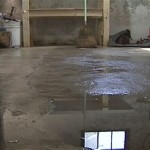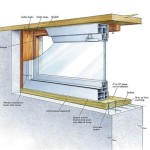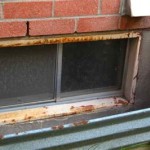```html
Do You Need A Sump Pump In Your Basement?
The question of whether a sump pump is necessary in a basement is a common one for homeowners, especially those residing in areas prone to heavy rainfall, high water tables, or potential flooding. A sump pump is essentially a device that removes water that has accumulated in a sump basin, usually located in the basement of a house. It plays a crucial role in preventing water damage and maintaining the structural integrity of the building. Understanding the factors that determine the necessity of a sump pump is paramount for informed decision-making regarding home maintenance and flood prevention.
The primary function of a sump pump is to prevent basement flooding. Excessive water accumulation in a basement can lead to a myriad of problems, including damage to personal property, mold growth, and structural deterioration of the foundation. A sump pump proactively removes water before it reaches levels that cause these issues. The water is typically discharged away from the house, minimizing the risk of re-entry. This mechanism is particularly important in situations where the water table is high or where drainage is poor.
Various factors contribute to the likelihood of basement flooding and, consequently, the need for a sump pump. The location of the property, the type of soil surrounding the foundation, the local climate, and the construction of the house all play a significant role. Evaluating these factors can help homeowners determine if a sump pump is a worthwhile investment.
Key Factors to Consider
Several key factors influence the necessity of a sump pump. These include the geographical location, the soil composition around the foundation, and the historical or potential for flooding. Analyzing these aspects of the property allows for a more accurate assessment of the risks involved.
Geographical Location and Climate
The geographical location of a property significantly impacts its susceptibility to basement flooding. Areas with high annual rainfall or those located near bodies of water, such as rivers, lakes, or oceans, are naturally more prone to water intrusion. Coastal regions are particularly vulnerable to rising sea levels and storm surges, which can overwhelm existing drainage systems and lead to widespread flooding. Similarly, areas with frequent heavy snowfall can experience significant water runoff during the spring thaw, increasing the risk of basement flooding. In these regions, a sump pump acts as a critical defense against water damage.
Furthermore, the local climate plays a vital role. Areas with distinct wet and dry seasons may experience periods of intense rainfall followed by prolonged periods of drought. During the wet season, the ground becomes saturated, reducing its ability to absorb additional water. This can lead to increased surface runoff and a higher water table, both of which contribute to basement flooding. Even in areas with moderate rainfall, prolonged periods of precipitation can overwhelm the natural drainage capacity of the soil, making a sump pump a valuable asset.
Soil Composition and Drainage
The type of soil surrounding a foundation significantly influences its ability to absorb water and prevent flooding. Sandy soils, for example, are highly porous and allow water to drain quickly. Homes built on sandy soil are generally less prone to basement flooding because the water readily percolates through the ground. Conversely, clay soils are dense and impermeable, hindering water drainage. When rainwater or groundwater encounters clay soil, it tends to remain on the surface or accumulate around the foundation, increasing the risk of water intrusion into the basement. Properties with clay-rich soil benefit greatly from the installation of a sump pump to actively remove excess water.
In addition to soil type, the overall drainage of the property is crucial. Poor drainage can result from various factors, including improper grading around the foundation, clogged gutters and downspouts, or inadequate landscaping. If the ground slopes towards the house, rainwater will naturally flow towards the foundation, increasing the likelihood of basement flooding. Similarly, blocked gutters and downspouts prevent rainwater from being channeled away from the house, leading to water accumulation around the foundation. Addressing these drainage issues can help reduce the risk of flooding, but a sump pump provides an additional layer of protection, especially in areas with poor soil drainage.
History of Flooding and Water Problems
A history of basement flooding or water problems is a strong indicator that a sump pump is necessary. If the basement has flooded in the past, even if the flooding was minor or infrequent, it suggests an underlying vulnerability to water intrusion. Addressing the root cause of the flooding is essential, but a sump pump provides a reliable solution for managing any future water accumulation. Recurring issues such as dampness, condensation, or water stains on the basement walls also point to potential water problems that a sump pump can help mitigate.
Homeowners should also consider the experiences of their neighbors. If neighboring properties have experienced basement flooding, it suggests that the area is generally prone to water intrusion. Even if the homeowner's property has not yet flooded, the risk is likely to be elevated. In such cases, proactively installing a sump pump can prevent future flooding and protect the property from potential damage. Furthermore, local building codes may require sump pumps in certain areas with a high risk of flooding.
Assessing Your Basement Environment
Beyond geographical and environmental factors, the characteristics of the basement itself play a role in determining the need for a sump pump. Factors such as the presence of cracks in the foundation, the type of basement floor, and the presence of finished living spaces all contribute to the overall risk of water damage.
Foundation Cracks and Weak Points
Cracks in the foundation walls or floor are a common entry point for water. Even small cracks can allow significant amounts of water to seep into the basement, especially during periods of heavy rainfall or high water tables. These cracks may be caused by various factors, including soil settlement, hydrostatic pressure, or freeze-thaw cycles. Regularly inspecting the foundation for cracks and addressing them promptly is crucial for preventing water intrusion. While sealing cracks can help, a sump pump provides an additional layer of protection by removing any water that manages to enter the basement.
Weak points in the foundation, such as gaps around pipes or utility lines, can also allow water to seep into the basement. These areas are often overlooked during routine inspections, but they can be significant sources of water intrusion. Ensuring that all penetrations in the foundation are properly sealed is essential for preventing water damage. However, even with meticulous sealing, a sump pump remains a valuable safeguard against unexpected water accumulation.
Type of Basement Floor and Walls
The type of basement floor and walls can influence the extent of water damage caused by flooding. Concrete floors, while durable, are porous and can absorb water. This can lead to dampness and the growth of mold and mildew. Finished basement floors, such as carpeting or hardwood, are particularly vulnerable to water damage. These materials can quickly become waterlogged and require extensive cleaning or replacement after a flood. A sump pump can prevent water from reaching these levels, minimizing the risk of damage to flooring materials.
Similarly, the type of basement walls can affect the extent of water damage. Unfinished concrete walls can tolerate some moisture without significant damage, but finished walls, such as drywall or paneling, are highly susceptible to water damage. These materials can warp, swell, and develop mold growth when exposed to water. A sump pump can prevent water from reaching these levels, protecting the finished walls from damage and minimizing the need for costly repairs.
Finished vs. Unfinished Basements
The presence of finished living spaces in the basement significantly increases the need for a sump pump. Finished basements typically contain valuable possessions, such as furniture, electronics, and personal belongings. These items are highly susceptible to water damage and can be costly to replace. Furthermore, finished basements often contain electrical systems, which can pose a safety hazard if exposed to water. A sump pump is essential for protecting these valuable assets and preventing electrical hazards.
Unfinished basements, while less likely to contain valuable possessions, can still benefit from a sump pump. Even in an unfinished basement, water accumulation can lead to mold growth and structural damage to the foundation. A sump pump can prevent these problems, preserving the integrity of the building and maintaining a healthy indoor environment. Moreover, an unfinished basement may be used for storage, and a sump pump can protect stored items from water damage.
Considering the Cost vs. Benefits
While the initial cost of purchasing and installing a sump pump may seem like a significant expense, it is important to consider the potential costs associated with basement flooding. These costs can include damage to personal property, structural repairs, mold remediation, and increased insurance premiums. A sump pump can prevent these costly problems, making it a worthwhile investment in the long run.
Potential Damage Without a Sump Pump
Without a sump pump, a basement is vulnerable to a wide range of potential damage caused by flooding. Water damage can ruin furniture, carpets, electronics, and other personal belongings. Structural damage to the foundation can occur as water seeps into cracks and weakens the concrete. Mold and mildew can grow in damp environments, posing health risks and requiring professional remediation. Electrical systems can be damaged by water, leading to short circuits and fire hazards. The cumulative cost of these potential damages can easily exceed the cost of purchasing and installing a sump pump.
Long-Term Cost Savings
The long-term cost savings associated with a sump pump can be substantial. By preventing basement flooding, a sump pump eliminates the need for costly repairs and replacements. It also prevents mold growth, which can lead to health problems and require professional remediation. Furthermore, a sump pump can help maintain the value of the property by preventing structural damage and preserving the integrity of the foundation. In many cases, the cost of a sump pump is quickly recouped through avoided expenses.
Insurance Implications
Many homeowners insurance policies do not cover damage caused by flooding, particularly if the flooding is due to groundwater intrusion. Obtaining flood insurance may be necessary in areas with a high risk of flooding, but this can be expensive. A sump pump can help reduce the risk of flooding, potentially lowering insurance premiums or eliminating the need for flood insurance altogether. Furthermore, some insurance companies may offer discounts to homeowners who have a sump pump installed. It is important to consult with an insurance provider to understand the coverage options and potential savings associated with a sump pump.
```
Do I Need A Sump Pump Updated 2024

Does Every House Need A Sump Pump Affordable Waterproofing

Why Do You Need A Sump Pump In Your Basement

How To Not Flood Your Basement A Guide Sump Pump System Home Inspection Geeks

Why Do You Need A Sump Pump Everdry Toledo Ohio Michigan

Do I Need A Sump Pump In My Basement Mcmahon Services

Do You Need A Sump Pump

Why New Houses Need A Sump Pump

What You Need To Know Before Buying A Sump Pump Bob Vila

Basement Sump Pump Sedona Waterproofing Solutions
Related Posts







